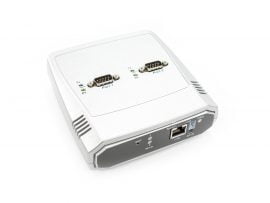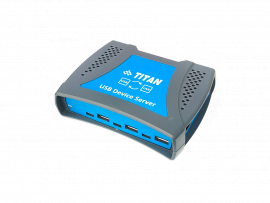First, set the mode to RFC2217 server mode.
Install the Cyclades-Serial-Client.
Cyclades-Serial-Client can be downloaded and installed from most Linux software repositories using the following command:
$ sudo apt-get install cyclades-serial-client
Configuring Cyclades-Serial-Client:
Once installed, you can optionally edit the configuration file, cyclades-devices, using a text editor.
To view the help file, use: man cyclades-devices.
The configuration file is usually located in /etc/, so to edit the file using vi, you could use this command line:
sudo vi /etc/cyclades-devices.
The cyclades-devices configuration file uses the following format:
device: rastype: rasname: physport: type: options
device: The local device name, starting with a '/dev/' prefix.
rastype = "prts" or "path"
rasname = IP address of the server
physport = "1"
Type: must be 'rtelnet' for remote Telnet.
Options can be left blank.
Here is an example of a Cyclades Devices configuration file:
/dev/ptyp0:prts:192.168.1.100:1:
The configuration file can also contain comments, which are lines beginning with a # character.
Pseudo device names work best: /dev/ptypX, where X is a value between 0 and 9, or A and Z.
While any non-standard pseudo device name, such as /dev/modem, can be used with Minicom, such names may fail to be accessible by other serial communication applications. Therefore, we recommend using a valid pseudo-device name, such as: /dev/ptyp0.
The client includes two executables:
cyclades-serial-cli: the virtual COM port redirector client.
cyclades-serial-client: the client status/management tool.
The cyclades-serial-cli program is designed to be run from init, so that is is loaded during boot up. However doing so will cause it to continuously hold one of the COM port open in NCOM or NCAN device, so it is recomended to run this from a terminal console instead where it can easily be controlled (ie: stopped by pressing Ctrl-C). This is done using the -x command line parameter from a Terminal.
Open a Terminal and type the following command line:
sudo cyclades-ser-cli -p 5999 -m 1 -x /dev/ptyp0 192.168.1.100 1
Replace the IP address in the command line with the actual IP address (or hostname) of the NCOM or NCAN device.
The most commonly used parameters are defined below:
-p 5999: This must be one less than the NCOM or NCAN device TCP port.
-m 1: Causes the client to ignore the carrier detection signal.
-x [causes the client to run in foreground console mode when started from a terminal]
/dev/ptyp0: overrides the device name in the configuration file.
– 192.168.1.100: The IP address (or hostname) of the NCOM or NCAN device.
1 [This should always be 1; a setting of 0 will select TCP port 23].
The client is now running and redirecting data between the pseudo-TTY named /dev/ptyp0 on the Linux box and NCOM or NCAN device.
It is important to use the -p parameter to specify a value that is one less than the TCP port on the NCOM or NCAN device. If NCOM or NCAN device is using TCP port 6000, for example, then the client’s command line should always use -p 5999.
The -m 1 parameter should also be used to instruct the client to ignore the Device Carrier Detection (commonly called the CD or DCD line). This is due to a bug in Cyclades-Ser-Cli that causes it to detach the pseudo TTY from the Telnet/socket connection as soon as the modem server reports that the DCD line is low (set to zero).
This prevents applications from ‘hanging up’ or knowing when the modem has been disconnected; however, Minicom will still show the user a ‘NO CARRIER’ message to indicate disconnection. A hang-up can be achieved by closing and restarting cyclades-ser-cli.





